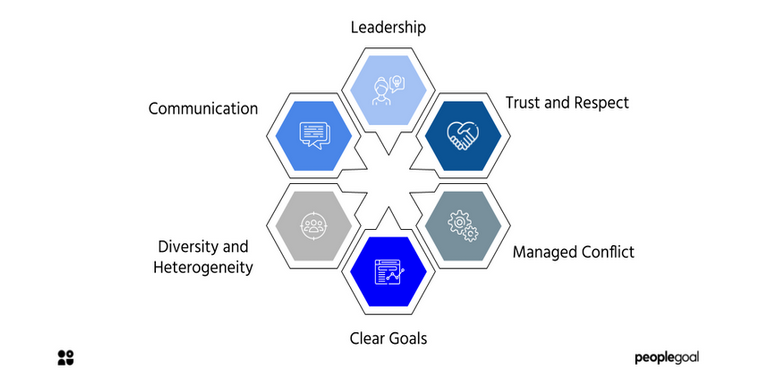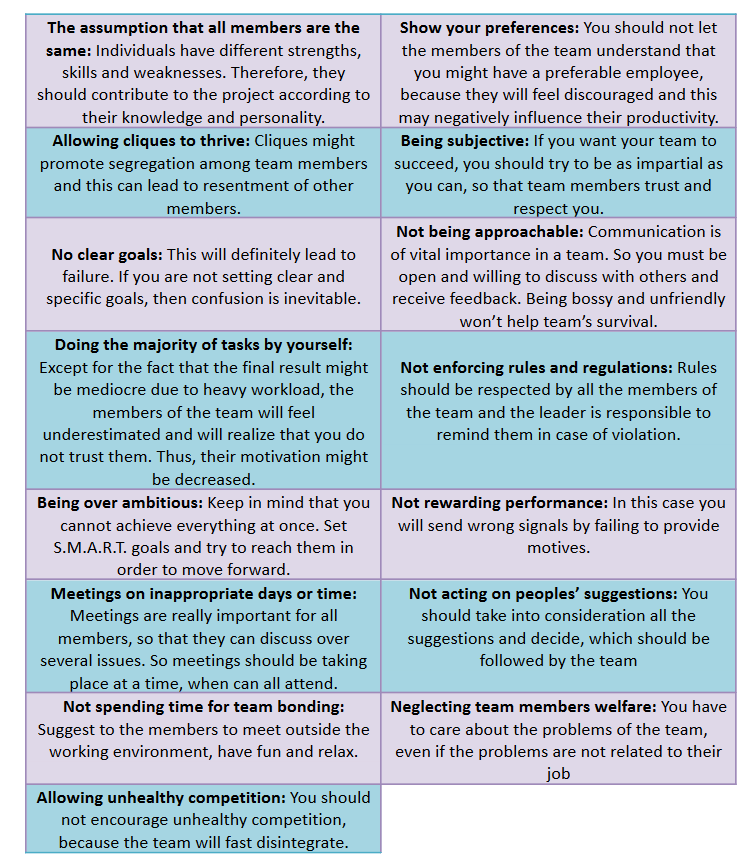Team building

What makes a team?
“A team is a group of individuals, all working together for a common purpose” (Understanding Team – What Is a Team?, n.d.). There is a difference between a group and a team. A group can include individuals with common interests, beliefs and attitudes. However, it is not necessary that the members of the group will have the same objectives and will work together to achieve them. On the other hand, in a team it is obligatory that the members have a common objective to achieve. The size of the team depends on the kind of the task to be carried out.
Team building survival skills
A thriving team has several characteristics, which help the team survive throughout the years. Below is an adapted version of Dr Baker’s model, which presents six factors that assist in team’s maintenance: Communication, Leadership, Trust and Respect, Managed Conflict, Clear Goals, Diversity and Heterogeneity (Garvey, 2018).

COMMUNICATION
Communication is, without a shadow of doubt, the most essential trait in a team. All members should feel free to express their thoughts, beliefs and ideas without the fear of being criticized or mocked. Environment of meritocracy should be cultivated, so that everybody contributes freely. Poor communication may lead to misunderstandings concerning either interpersonal relationships or job description; thus, team’s survival is limited.
LEADERSHIP
A capable leader is really important for a team. Team members should trust and respect him/her. Leaders should ask for feedback and accept good criticism, so that they can also improve their performances. They care about team members’ problems and are willing to discuss anything that affects them. Leaders should act like mentors, not like a strict boss and should keep team’s morale high.
TRUST AND RESPECT
A thriving team relies οn trust and mutual respect among all members. Leaders play a vital role in promoting a culture of respect in the team. Individuals in a team should be aware of their strengths and weaknesses and should encourage each other to do their best. All voices should be heard equally. Members should trust one another and share their problems freely. There should not be any fear among the team members, so that everybody can also admit that they made a mistake without being afraid of being finger-pointed.
CONFLICT MANAGEMENT
The issues that may arise should not be ignored. They need to be discussed and solved. In this way creativity and productivity will be increased, communication will be amplified and team members’ bonds will be reinforced.
CLEAR GOALS
The major fact that differentiates a team from a group of individuals is the common and clear goal, as mentioned above. This goal should be appealing to the team, so that they are motivated to work and reach it. There must be a clear plan and tasks should be delegated according to the different strengths of individuals.
DIVERSITY AND HETEROGENEITY
Teams that aim at being successful and survive over time value diversity. Each member is valued for his/her talents and skills and undertakes tasks that match these unique strengths. It is of vital importance that different beliefs, experiences and ideas be shared among the team members and different cultural, financial and social backgrounds be respected equally.
Common mistakes when team building
When team building, there are some common mistakes that are best to be avoided, in order to achieve team’s survival and success. Below there is a table indicating what you should avoid when it comes to team building (Belonwu, 2013):
AVOID (TO)


